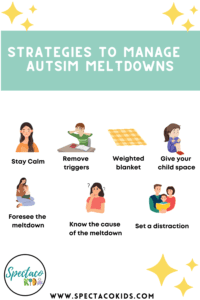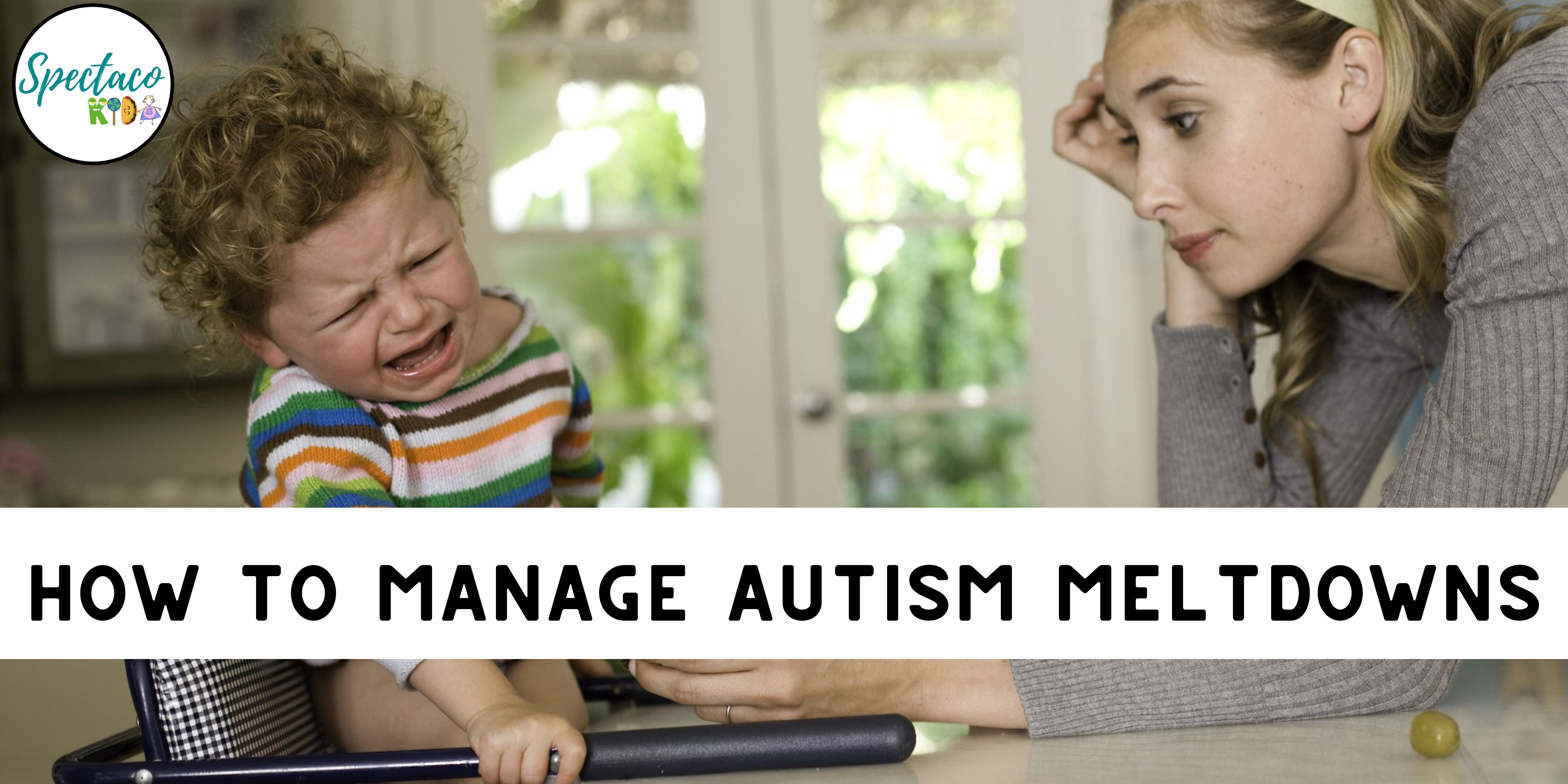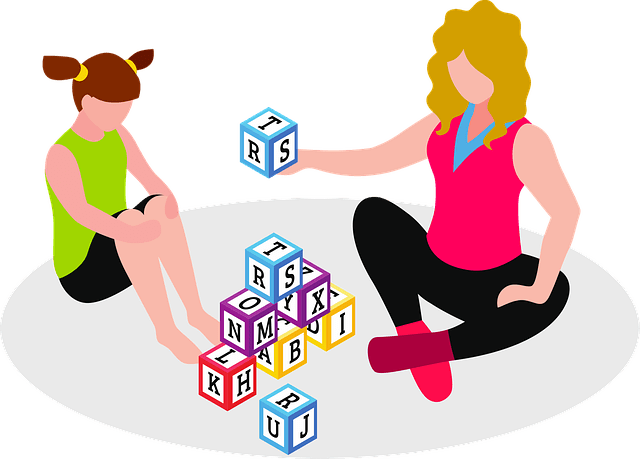Autistic children experience a lot of hardship when it comes to regulating their behavior. Sometimes even the smallest of situations can affect their mood and cause them to have a meltdown. This can become challenging for the parents to manage, especially in public settings.
What Is An Autism Meltdown?
Unlike tantrums, autism meltdowns are not used as a tool to get something the child wants. Infact, it represents a loss of control. A meltdown is an intense response to new or overwhelming situations faced by the individual. This in turns causes them to lose control.
What Causes A Meltdown?
Some of the reasons why people on the spectrum experience meltdowns are listed below:

- ADHD – disability to focus and getting bored can lead to outbursts
- Learning Problems – learning disorders can increase frustration and cause meltdowns
- Anxiety – can cause a child to be overwhelmed when in new or uncomfortable settings
- Sensory Challenges
- Inability to manage situations – can make it difficult for autistic children to cope with situations that may arise there and then, thus, making it harder for them
- Difficulty understanding societal norms
- Difficulty in speaking
- Trouble following or using non-verbal communication
- Uncertainty about what others are thinking about you
- Hesitancy to be social
What Else Do I Need To Know About Meltdowns?
Some other facts regarding the nature of autism meltdowns are as follows:
Can occur at any point in time, whether in children or adults:
This could make the situation for parents tricky as each stage comes with its set of challenges, especially if the individual does not explicitly show signs of disability.
Do not have any intended purpose:
Whilst children throw tantrums to get what they want; meltdowns represent and internal crisis and require urgent help.
Often occur after some warning signs:
You will notice that before you witness an individual experience an autism meltdown, there will surely be some clear signs of distress to watch out for. These can be verbal or even physical in nature.
May Include self-stimulating behaviors either before or after the meltdown:
These can identified as pacing, tapping feet, rocking to and fro for example.
What Does An Autism Meltdown Look Like?
Autism meltdowns can manifest in many ways. Every individual experiences different emotions of varying magnitudes. However, some common things to look out for are:

- away
- Zoning out
- Crying Excessively
- Yelling and Screaming
- Social Withdrawal
- Displaying aggression, hitting, or kicking others
- Self-harming behaviors like biting or head banging
How To Prepare Yourself To Manage A Meltdown?
Some useful tips to help prepare you to manage a meltdown are listed below:

-
Know the cause of the meltdown
It is very important that you understand your child’s behavioral patterns. This helps you to stay informed and prepare yourself before something takes place. It’s best to record your child’s behavior before, during and after a meltdown so you know just what to do and can better understand your child’s reactions and plan what can be done about them the next time round.
-
Foresee the meltdown before it occurs
As highlighted above, there are certain signs one can expect before a meltdown. When these signs of anxiety and distress appear, it is best to take immediate action and create a diversion or remove the main reason for the anxiety if possible.
-
Minimalize factors that prompt a meltdown
The best way to do this is to avoid things that may trigger your child, like loud music for example or overcrowded places. Additionally, teach your child coping strategies so that they can better manage themselves in unfavorable circumstances and be able to control their emotions.
-
Stay calm
This is one of the most important things to bear in mind when dealing with complex situations. This skill can also be taught to your child so that they can become more relaxed in unnerving situations.
-
Give your child space
Sometimes giving children their space can solve many problems and help them to relax faster, especially during a meltdown. When surrounded by people, this may be a good way to help both you and your child, by coming to an understanding about what must be done when in case of a meltdown.
-
Setup a distraction
After your child has calmed down a little, you can create a diversion to divert their attention onto something more useful, which appeals to them. This will help to curb the meltdown quicker and keep your child happy too.
What Are Some Useful Sensory Tools For Autism Meltdowns?
Sensory toolkits can be very helpful when it comes to managing your child’s meltdown. It’s a good idea to pack these and carry them whenever you are on the go so they are readily available when you need them. Here’s a list of a few things that could come in handy:
-
Noise-cancelling headphones
These headphones use noise-cancelling technology that helps to minimize outside noise and can be a great way to protect your child from places with loud music for example.
-
Sunglasses
If your child is sensitive to light, sunglasses can shade them from very bright lights.

-
Weighted Blanket
Weighted blankets are a great way to calm autistic children as they add pressure and are warm, making them feel cozy and safe.
-
Crunchy or chewy snacks
Crunchy or chewy snacks have a calming effect when kids get cranky and are hungry.
-
Fidget Toy
These repetitive toys are simple to use and fun to play around, especially in stressful situations as they provide a calming effect.
-
Scented Hand Lotion
Good-smelling scents provide a soothing effect especially when inhaled and area quick and cheap method to help your child during meltdowns.
-
Hand Wipes
Children with tactile sensitivities can touch some things that may irritate their skin. These wipes com very handy to cool down the irritation.
Whilst meltdowns aren’t always the easiest to deal with, there are many methods that parents can use to manage their child’s emotional wellbeing.




Thank you for the sensible critique. Me & my neighbor were just preparing to do a little research about this. We got a grab a book from our local library but I think I learned more clear from this post. I am very glad to see such excellent information being shared freely out there.
Good day! I know this is kinda off topic but I was wondering ifyou knew where I could locate a captcha plugin for my comment form?I’m using the same blog platform as yours and I’m having problems findingone? Thanks a lot! New Princess Snow White Dress Cosplay Costume Woman
I really like and appreciate your article.Really looking forward to read more. Really Cool. Tinker bell Princess Dress Cosplay Costumes
Hey there just wanted to give you a quick heads up. The text in your post seem to be running off the screen in Safari. I’m not sure if this is a formatting issue or something to do with browser compatibility but I figured I’d post to let you know. The style and design look great though! Hope you get the issue resolved soon. Many thanks Aladdin Princess Jasmine Dress Aladdin Dress Cosplay Costume
Aw, this was a very nice post. Taking a few minutes and actual effort to produce a very good article? but what can I say? I hesitate a whole lot and never seem to get anything done. The Legend of Zelda Breath of the Wild Link Cosplay Costumes
**mind vault**
mind vault is a premium cognitive support formula created for adults 45+. It’s thoughtfully designed to help maintain clear thinking
**mindvault**
mindvault is a premium cognitive support formula created for adults 45+. It’s thoughtfully designed to help maintain clear thinking
**glpro**
glpro is a natural dietary supplement designed to promote balanced blood sugar levels and curb sugar cravings.
**sugarmute**
sugarmute is a science-guided nutritional supplement created to help maintain balanced blood sugar while supporting steady energy and mental clarity.
**vittaburn**
vittaburn is a liquid dietary supplement formulated to support healthy weight reduction by increasing metabolic rate, reducing hunger, and promoting fat loss.
**synaptigen**
synaptigen is a next-generation brain support supplement that blends natural nootropics, adaptogens
**glucore**
glucore is a nutritional supplement that is given to patients daily to assist in maintaining healthy blood sugar and metabolic rates.
**prodentim**
prodentim an advanced probiotic formulation designed to support exceptional oral hygiene while fortifying teeth and gums.
**nitric boost**
nitric boost is a dietary formula crafted to enhance vitality and promote overall well-being.
**wildgut**
wildgutis a precision-crafted nutritional blend designed to nurture your dog’s digestive tract.
**sleep lean**
sleeplean is a US-trusted, naturally focused nighttime support formula that helps your body burn fat while you rest.
**mitolyn**
mitolyn a nature-inspired supplement crafted to elevate metabolic activity and support sustainable weight management.
**yu sleep**
yusleep is a gentle, nano-enhanced nightly blend designed to help you drift off quickly, stay asleep longer, and wake feeling clear.
**zencortex**
zencortex contains only the natural ingredients that are effective in supporting incredible hearing naturally.
**breathe**
breathe is a plant-powered tincture crafted to promote lung performance and enhance your breathing quality.
**prostadine**
prostadine is a next-generation prostate support formula designed to help maintain, restore, and enhance optimal male prostate performance.
**pineal xt**
pinealxt is a revolutionary supplement that promotes proper pineal gland function and energy levels to support healthy body function.
**energeia**
energeia is the first and only recipe that targets the root cause of stubborn belly fat and Deadly visceral fat.
**prostabliss**
prostabliss is a carefully developed dietary formula aimed at nurturing prostate vitality and improving urinary comfort.
**boostaro**
boostaro is a specially crafted dietary supplement for men who want to elevate their overall health and vitality.
**potent stream**
potent stream is engineered to promote prostate well-being by counteracting the residue that can build up from hard-water minerals within the urinary tract.
**hepato burn**
hepato burn is a premium nutritional formula designed to enhance liver function, boost metabolism, and support natural fat breakdown.
**hepatoburn**
hepatoburn is a potent, plant-based formula created to promote optimal liver performance and naturally stimulate fat-burning mechanisms.
**flowforce max**
flowforce max delivers a forward-thinking, plant-focused way to support prostate health—while also helping maintain everyday energy, libido, and overall vitality.
**neuro genica**
neuro genica is a dietary supplement formulated to support nerve health and ease discomfort associated with neuropathy.
**cellufend**
cellufend is a natural supplement developed to support balanced blood sugar levels through a blend of botanical extracts and essential nutrients.
**prodentim**
prodentim is a forward-thinking oral wellness blend crafted to nurture and maintain a balanced mouth microbiome.
**revitag**
revitag is a daily skin-support formula created to promote a healthy complexion and visibly diminish the appearance of skin tags.